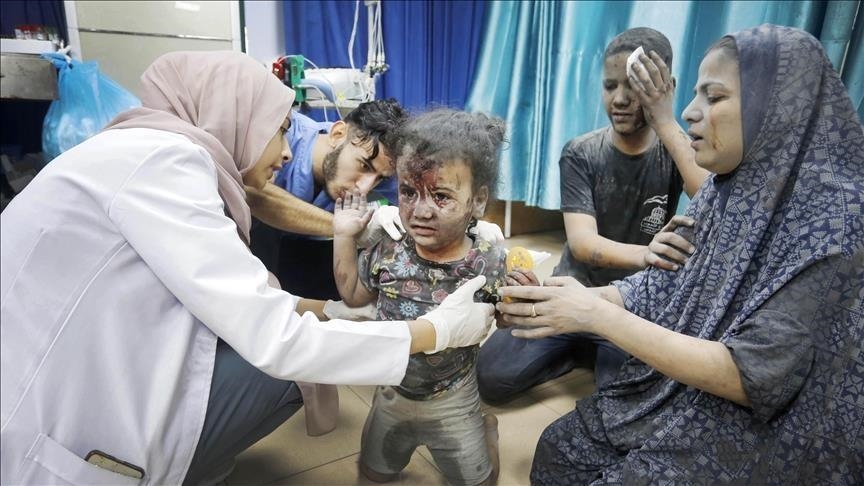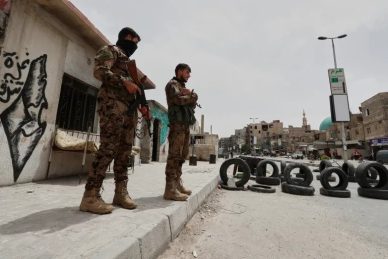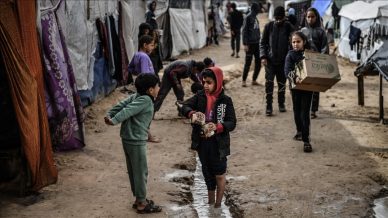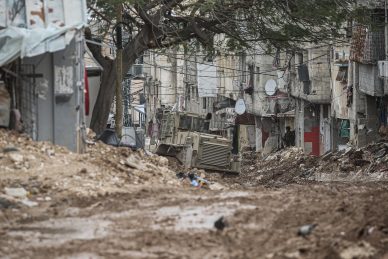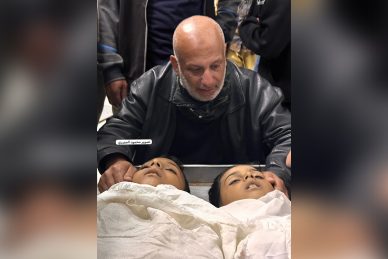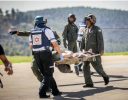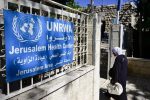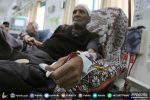GAZA, (PIC)
With the relentless Israeli war on the Gaza Strip, the suffering of children in the Gaza Strip takes on multiple dimensions, as Israel has turned them into targets of a ruthless and indiscriminate campaign.
After more than four months and a half of genocide, the Israeli occupation army kills children at a catastrophic rate and with a level of brutality not seen in recent decades, according to Palestinian human rights organizations.
The number of children under the age of 18 in Gaza is approximately 1.06 million, accounting for 47% of the total population of the Gaza Strip, according to data from the Palestinian Central Bureau of Statistics.
Staggering numbers of martyrs
Among more than 28,000 martyrs in the Gaza Strip, there are 12,000 children according to unofficial statistics, while there are still 7,000 missing, 70% of whom are children and women.
This doubles the rate of child killings compared to the numbers we have seen over the past twenty years, according to a statement by the Palestinian Center for Human Rights, Al Mezan Center, and Al Haq Foundation.
Loss of limbs
According to the statement, more than 10 children on average lose one or both of their legs daily in Gaza since the beginning of the Israeli military aggression, due to the shortage of medical equipment, supplies, and medicines in the face of the staggering number of victims. Additionally, power outages and fuel shortages to operate the sole power plant in Gaza have exposed many newborns in incubators to death. Kidney dialysis services have also stopped, and the survival rate has become minimal.
The ongoing Israeli attacks on healthcare institutions, and the closure of dozens of hospitals and healthcare facilities, have significantly exacerbated the suffering of children suffering from kidney failure who constantly and urgently need dialysis.
Suffering from kidney failure
Ansam Mazen Al Askari, a 12-year-old girl from Jabalia refugee camp in northern Gaza, suffers from acute kidney failure. Her mother recounts her suffering, stating that Ansam needs kidney dialysis four times a week, and due to the war on Gaza, her suffering in performing dialysis has become more severe.
She says: “We barely get 4 hours per week split over two days instead of 12 hours per week compared to before the war, all due to the scarcity of healthcare resources, power outages, fuel shortages, and the overcrowding of patients across Gaza.”
Ansam was supposed to travel on October 15, 2023, for treatment at Al Muntala Hospital in the West Bank, but due to the war, she couldn’t travel or receive treatment. Now, she suffers greatly in accessing her treatment or even getting a little rest as she needs special care that she lacks amid displacement from northern Gaza to the south and her presence in a tent that doesn’t protect her from the winter cold along with the rest of her family.
Alone after his father’s arrest
As for 11-year-old Naseem Marwan Mahra, who suffers from acute kidney failure, his tragedy is twofold. During his forced displacement, his father was arrested by the occupation soldiers, leaving him alone with someone who volunteered to take care of him.
Adel Mohammed Haniyya, a resident of northern Gaza, recounts his story with Naseem: “My guardianship of this child began on November 20, 2023, when his father decided to flee to the south of Gaza due to the lack of dialysis facilities in northern Gaza, especially after Israeli soldiers raided Al Rantisi Hospital for children with kidney failure and cancer.”
He explained that during Naseem and his father’s attempt to cross the Israeli occupation forces checkpoint through the safe passage, “his father was arrested while I was present at the checkpoint, leaving this child alone crying after being insulted by one of the soldiers present at the checkpoint who pushed him to walk south.”
He said, “I hugged this child and took care of him until this day. I asked him for his information or any contact means, then I contacted his mother by phone and she explained to me that Naseem needs kidney dialysis and that their displacement to the south was for this reason. Since then, I’ve been taking him to the hospital for dialysis sessions, and his health condition is not good as sometimes he suffers from severe convulsions and imbalance due to increased toxins and breakdown of blood cells as the doctors told me.”
Displacement risks
Displacement suffering is another aspect of children’s suffering, as among about 1.9 million displaced persons in Gaza, more than half of them are children. More than 600,000 children and their families have been displaced, many of them more than once, to Rafah Governorate according to the latest statement from the Executive Director of UNICEF.
The organization estimates that at least 17,000 children have become separated from their families.
“I don’t know anything about my family”
Sixteen-year-old Salsabil Baddawi from Gaza recounts horrific scenes during her displacement: “After the start of the ground attack on the Gaza Strip about a week or so, the Israeli army began bombing with incendiary bombs the neighborhood where we lived. My mother told me to go to the south with the neighbors, and my brother Zakaria told me he would catch up with me, but he was martyred, and so was my brother Yusuf who was injured in his legs and feet.”
She added, “I went out with our neighbors ‘Al Amarin family’, and I don’t know anything about my family until now, and there is no communication between us. During my displacement with our neighbors from northern Gaza through the safe passage, there were the bodies of many martyrs lying on the ground, and I passed over them and accidentally stepped on the head of a martyr. May God forgive me. I separated from our neighbors, saw tanks in front of me, and the Israeli army was killing people beside me. After I separated from them and crossed the checkpoint, I found them, and they are the ones who brought me here to Rafah.”
Death by starvation
Children in Gaza live in dire conditions where they face the risk of death by starvation. The latest report from the Integrated Phase Classification for Food Security (IPC) indicated devastating levels of food insecurity in the Gaza Strip.
The report confirmed that all residents of Gaza are experiencing a crisis or worse levels of acute food insecurity, and many adults are suffering from hunger so that children can eat.
According to the statement, children are the most vulnerable group to the risk of death due to malnutrition and the spread of infectious diseases such as scabies, lice, waterborne diseases, and skin rashes. More than a thousand cases of acute respiratory infections have been recorded.
These diseases are spreading with widespread destruction of infrastructure and basic water and sanitation services. This danger comes at a time when the healthcare system in Gaza is on the verge of total collapse, with children under the age of five, numbering 335,000, particularly at risk.
More than 80% of young children suffer from severe malnutrition, and information shows that the rate of wasting in children has increased significantly compared to pre-current crisis conditions, affecting thousands of children. Wasting is one of the most dangerous symptoms of malnutrition threatening children’s lives, according to the statement.
Loss of support and care
Children primarily rely on the support and care of the adults around them, which has been abruptly cut off for thousands of them due to the loss of their caregivers, or even due to the emotional absence of parents as a result of the environment that naturally imposed fear, tension, and focus on survival instinct and protection.
Human rights organizations have stated: “Those children who escaped death in the raids of the Israeli occupation will not escape facing destruction and witnessing death and horror due to the bombings that targeted safe homes, schools, mosques, hospitals, and even healthcare facilities.”
Given the difficult circumstances in the Gaza Strip, and due to the displacement and the loss of many families’ breadwinners, many children have been forced to work by selling goods in markets or collecting firewood and transporting water to secure the minimum requirements for their own survival and perhaps for their families who have become without breadwinners.

